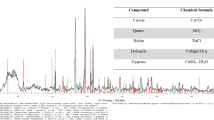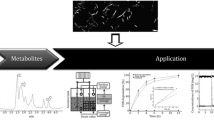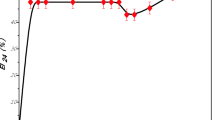Abstract
The effect of surfactants on pyrene degradation in Pseudomonas fluorescens 29L was investigated. This strain produced 30.1 μM of rhamnolipid equivalents (RE) of biosurfactants on 50 mg of pyrene per liter of medium. The production of biosurfactants was significantly correlated with the water solubility (S w) of the substrate and the growth rate on it. When chrysene, with a S w of 2.8 × 10−3 mg per liter of water, was the carbon source, 13.1 μM of RE of biosurfactants were produced compared to 10.3 μM of RE of biosurfactants on acenaphthene with a S w of 1.9 mg per liter of water. No biosurfactants were produced on salicylic acid, catechol, and citrate. All of the strain 29L mutants which grew on pyrene produced biosurfactants while among the mutants which grew on naphthalene, only 88.4% produced biosurfactants. The rhamnolipid mixture, JBR425, inhibited the growth of Strain 29L wild type (WT) and all of its mutants on pyrene. However, these mutants were able to grow in the presence of pyrene when the growth medium was supplemented with 10−6 mg of emulsan per milliliter of medium. This study implies biosurfactants are produced by Strain 29L as a physiological response to the hydrophobicity of pyrene. The combined use of indigenous biosurfactants and the added biosurfactant, emulsan, is a biotechnology to enhance pyrene degradation by Pseudomonas fluorescens 29L.

Similar content being viewed by others
References
Boonchan S, Britz ML, Stanley GA (1998) Surfactant-enhanced biodegradation of high molecular weight polycyclic aromatic hydrocarbons by Stenotrophomonas maltophilia. Biotechnol Bioeng 59:482–494
Chiou CT (1999) Organic chemical movement over and through soil. In: Sawhney BL, Brown K (eds) Reactions and movement of organic chemicals in soils. SSSA Special Publication 22. Soil Science Society of America, Madison, WI
Chiou CT, Shoup TD, Porter PE (1985) Mechanistic roles of soil humus and minerals in the sorption of nonionic organic compounds from aqueous and organic solutions. Org Geochem 8:9–14
Christofi N, Ivshina IB (2002) Microbial surfactants and their use in field studies of soil remediation. J Appl Microbiol 93:915–929
Das K, Mukherjee AK (2007) Differential utilization of pyrene as the sole source of carbon by Bacillus subtilis and Pseudomonas aeruginosa strains: role of biosurfactants in enhancing bioavailability. J Appl Microbiol 102:195–203
Deschênes L, Lafrance P, Villeneuve J, Samson R (1996) Adding sodium dodecyl sulfate and Pseudomonas aeruginosa UG2 biosurfactants inhibits polycyclic aromatic hydrocarbon degradation in a weathered creosote-contaminated soil. Appl Microbiol Biotechnol 46:638–646
Garbarini DR, Lion LW (1986) Influence of the nature of soil organics on the sorption of toluene and trichloroethylene. Environ Sci Technol 20:1263–1269
Georgiou G, Lin SC, Sharma M (1992) Surface active compounds from microorganisms. Nat Biotechnol 10:60–65
Goldman S, Shabtai Y, Rubinovitz C, Rosenberg E, Gutnick DL (1982) Emulsan in Acinetobacter calcoaceticus RAG1: distribution of cell-free and cell-associated cross-reacting material. Appl Environ Microbiol 44:165–170
Haba E, Pinazo A, Espuny MJ, Infante MR, Manresa A (2003) Physicochemical characterization of antimicrobial properties of rhamnolipids produced by Pseudomonas aeruginosa 47T2 NCBIM 40044. Biotechnol Bioeng 81:316–322
Haigh SD (1996) A review of the interaction of surfactants with organic contaminants in soil. Sci Total Environ 185:161–170
Harvey RG (1992) Polycyclic aromatic hydrocarbons chemistry and carcinogenicity. Cambridge University Press, Cambridge, UK
Heitkamp MA, Freeman JP, Miller DW, Cerniglia CE (1988) Pyrene degradation by a Mycobacterium sp.: identification of ring oxidation and ring fission products. Appl Environ Microbiol 54:2556–2565
Herman DC, Zhang Y, Miller RM (1997) Rhamnolipid (biosurfactant) effects on cell aggregation and biodegradation of residual hexadecane under saturated flow conditions. Appl Environ Microbiol 63:3622–3627
Husain S (2008) Pyrene metabolic pathways, biosurfactants, and siderophores in Pseudomonas fluorescens Strain 29L. Ph.D. Dissertation, George Mason University, 212 pp
Koch AK, Kappeli O, Fitecher A, Reiser J (1991) Hydrocarbon assimilation and biosurfactant production in Pseudomonas aeruginosa mutants. J Bacteriol 173:4212–4219
Lang S, Katsiwela E, Wagner F (1989) Antimicrobial effects of biosurfactants. Fat Sci Technol 91:363–366
Makkar RS, Rockne KJ (2003) Comparison of synthetic surfactants and biosurfactants in enhancing biodegradation of polycyclic aromatic hydrocarbons. Environ Toxicol Chem 22:2280–2292
Manoli E, Samara C (1999) Polycyclic aromatic hydrocarbons in natural waters: sources, occurrence, and analysis. Trends Analyt Chem 18:417–428
Pinto LJ, Moore MM (2000) Release of polycyclic aromatic hydrocarbons from contaminated soils by surfactant and remediation of this effluent by Penicillium spp. Environ Toxicol Chem 19:1741–1748
Pizzul L, Castillo MP, Stenstrom J (2007) Effect of rapeseed oil on the degradation of polycyclic aromatic hydrocarbons in soil by Rhodococcus wratislaviensis. Int Biodeterior Biodegradation 59:111–118
Reese ET, Maguire A (1969) Surfactants as stimulants of enzyme production by microorganisms. Appl Microbiol 17:242–245
Robson RJ, Dennis EA (1977) The size, shape, and hydration of nonionic surfactant micelles. Triton X-100. J Phys Chem 81:1075–1078
Rodrigues AC, Brito AG, Melo LF (2001) Effect of the surfactants Tween 20 and CTAB on fluoranthene and anthracene degradation by P. putida. Paper no. 190. 3rd IWA International Specialised Conference on microorganisms in activated sludge and biofilm processes. Rome, Italy
Rosenberg E, Ron EZ (1999) High- and low-molecular mass microbial surfactants. Appl Microbiol Biotechnol 52:154–162
Shabtai Y, Gutnick DL (1985) Tolerance of Acinetobacter calcoaceticus RAG-1 to the cationic surfactant cetyltrimethylammonium bromide: role of the bioemulsifier emulsan. Appl Environ Microbiol 49:192–197
Sim L, Ward OP, Li Z (1997) Production and characterization of a biosurfactant isolated from Pseudomonas aeroginosa UW-1. J Ind Microbiol Biotechnol 19:232–238
Stelmack PL, Gray MR, Pickard MA (1999) Bacterial adhesion to soil contaminants in the presence of surfactants. Appl Environ Microbiol 65:163–168
Sun X, Puri RK (1997) Surfactant-enhanced solubility and mobility of polycyclic aromatic hydrocarbons in soil. Proceedings of the 12th Annual Conference on Hazardous Waste, Kansas City, KS, 19–22 May 1997
Tiehm A (1994) Degradation of polycyclic aromatic hydrocarbons in the presence of synthetic surfactants. Appl Environ Microbiol 60:258–263
Tugrul T, Cansunar E (2005) Detecting surfactant-producing microorganisms by the drop-collapse test. World J Microbiol Biotechnol 21:851–853
Van Hamme JD, Ward OP (2001) Physical and metabolic interactions of Pseudomonas sp. Strain JA5-B45 and Rhodococcus sp. Strain F9-D79 during growth on crude oil and effect of a chemical surfactant on them. Appl Environ Microbiol 67:4874–4879
Volkering F, Breure AM, Rulkens WH (1998) Microbiological aspects of surfactant use for biological soil remediation. Biodegradation 8:401–417
Yousseff NH, Dunca KE, Nagle DP, Savage KN, Knapp RM, McInerney MJ (2004) Comparison of methods to detect biosurfactant production by diverse microorganisms. J Microbiol Methods 56:339–347
Zhu L, Chen B (2003) Interactions of organic contaminants with mineral-adsorbed surfactants. Environ Sci Technol 37:4001–4006
Author information
Authors and Affiliations
Corresponding author
Rights and permissions
About this article
Cite this article
Husain, S. Effect of surfactants on pyrene degradation by Pseudomonas fluorescens 29L. World J Microbiol Biotechnol 24, 2411–2419 (2008). https://doi.org/10.1007/s11274-008-9756-9
Received:
Accepted:
Published:
Issue Date:
DOI: https://doi.org/10.1007/s11274-008-9756-9




